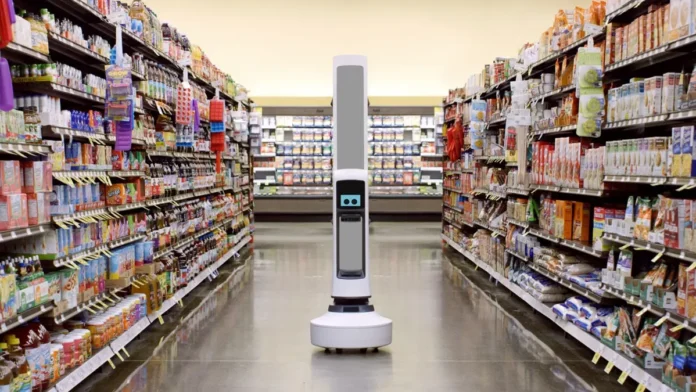At this year’s NRF event, Ricoh showcased its extensive service systems designed for the retail sector. As has become customary at recent NRF events, a variety of on-shelf availability solutions were on display. Attendees saw a mix of robots, fixed cameras, and handheld devices—technologies that have been evolving for more than a decade. Although progress has been gradual, vendors continue to work diligently to provide accurate, scalable inventory data while also striving to enhance processing speed.
Despite not yet achieving the full coverage necessary for optimal data utilization, the industry is nearing a breakthrough that will likely prompt large retailers to reconsider their current approaches. The central question remains: Which solution is best? The answer, as always, depends on the specific problem you need to address, the environment in which you operate, and the product categories in question. No single technology can offer a complete solution; instead, a combination of systems is required to create a seamless and satisfying shopping experience.
Retail Robotics Mature and Evolve
Simbe Robotics has established itself as a frontrunner in collecting shelf data with its robotic solutions. The company has been active in conferences and on social media, regularly unveiling new advancements. Its recent introduction of the Tally Spot fixed camera—complementing its Tally and Tally RFID systems—allows for comprehensive insights into on-shelf availability. This move comes as fixed shelf cameras gain wider acceptance across major retail chains.
While not on exhibit, Badger Technologies was present and highlighted its ongoing successes. Known for having the largest deployment of shelf-based robotics at a single retailer, Badger is reportedly preparing an announcement soon, opting not to exhibit until it is fully ready.
Brain Corp, stationed off-site near the Javits Center, continues to expand its presence with the largest rollout of its floor-sweeping robot and has now ventured into shelf insight technology. The company also shared a preview of its new project, Brawn—a mobile manipulator designed to retrieve products from shelves—suggesting a potential leap forward in retail robotics.
Innovative Approaches Beyond Traditional Robots
Spacee, a company that has consistently attracted attention, made a notable comeback at NRF through a collaboration with Spar. Its innovative system involves a robot traveling within a tube mounted on the opposite shelf. This robot captures images and videos of the corresponding planogram, which are then processed to generate valuable shelf insights. Integrating computer vision and artificial intelligence with Spar’s merchandising tools, Spacee’s technology aims to offer a comprehensive, end-to-end solution that could expand its appeal among retailers.
Diverse Solutions for a Complex Industry
Vusion stood out with its broad portfolio ranging from electronic shelf labeling to shelf-mounted cameras. Through strategic acquisitions, Vusion has been able to offer a more complete solution for on-shelf availability, including applications for fresh produce. The company also introduced the extended use of e-paper for shelf and aisle signs—a feature echoed by BrightSign. Although the current cost per unit remains high, this technology is expected to become more widespread as it plays a significant role in retail media and personalized shopping experiences.
Focal Systems, riding on the momentum of its chain-wide rollout at over 500 Morrisons stores, showcased its new, sleeker, high-resolution fixed-shelf cameras. This deployment marks the largest rollout of its kind and underscores the company’s evolution, following recent leadership changes and a refreshed brand image.
In addition, a new collaboration between Zebra Technologies and Target is leveraging computer vision on Zebra devices to detect on-shelf products. This approach benefits from Zebra’s established reputation with handheld devices used by store associates, further enhancing the accuracy and efficiency of inventory data collection.
Revisiting Service Robots in Retail
Recent advancements in robotic platforms and computer vision are breathing new life into service robots for retail. For example, the Temi robot—available via a robotics-as-a-service model—has been showcased for its ability to serve as a guide, assisting shoppers with directions and answers to common questions. Its friendly yet robust design reflects a market that is now far more receptive to such technology compared to a decade ago.
Managing a Growing Technological Landscape
As technology continues to proliferate in both the store and on the shelf, challenges in installation, monitoring, and maintenance are becoming more pronounced. Ricoh addressed these challenges with its “Service Advantage” offering, a comprehensive approach that ensures hardware is properly serviced and maintained to perform at peak levels.
Looking Ahead: The Future of Retail Technology
The initial excitement surrounding new store technologies is evolving. The focus is shifting toward the tangible value that hardware and software provide in solving real-world problems. As product maturity and market readiness advance, partnerships and consolidations are set to intensify, delivering more holistic solutions to retailers. The next phase of differentiation will rely on sensor-based solution layers that harness vast datasets for artificial intelligence. Traditional technology providers must rapidly innovate or risk being left behind, while newcomers face the challenge of deciding whether to build their own solutions or partner with established players.
Ultimately, when these innovations can consistently deliver actionable data at scale, they will revolutionize retail operations—rendering outdated practices obsolete and enhancing the overall return on investment for retailers. The question remains: Is your organization prioritizing these transformative changes?





